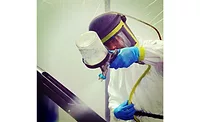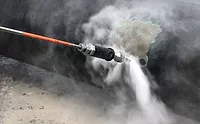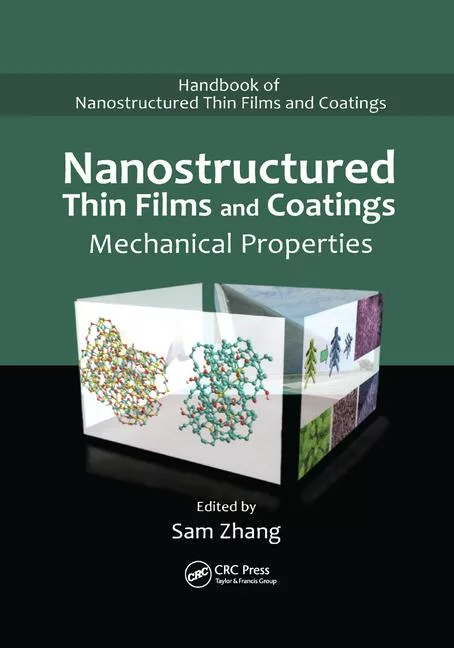Mechanical Cleaning Practical For Surface Preparation
Blasting alone does not add any pretreatment that will provide extended corrosion resistance to a product. But a thoroughly blasted surface that is free of oils, dirt and other contamination can provide very good results if the coating thickness is adequate and the coating coverage is thorough.
The blast media will vary dependent on the surface to be blasted and the quality requirements of the blasted product. Typically used media includes sand, steel shot, grit and glass bead. The media is delivered to the part surface at high velocity to impact the soils and cut them away from the metal surface.
The blasting equipment used to deliver the media may be air-blast or turbine-blast. Hand held air-blast systems are very dependent on the concentration of the operator and quality may vary. Blast cabinets are often suction-feed systems that draw particles into the spray gun by induced vacuum and accelerate the media with a metered stream of compressed air. There are also pressure-blast systems that use a pressurized vessel to deliver the media. Pressure systems are capable of higher nozzle velocity that can provide much faster cleaning of the surface than a suction system.
Blast cabinets function similar to any booth designed for containment of over-sprayed material. Negative pressure within the cabinet is maintained with a fan that draws air into the enclosure through a suitable filter. Typically, this exhaust system will use a cyclone separator to remove the dust and fine particles from the air stream and recover the media for reuse. The scrap material that is separated out of the air stream is collected for disposal in a container attached to a dust collector. This scrap material should contain a small percentage of the heavier, reusable media to indicate that the fan pull is sufficient to prevent the build-up of fines in the recovered blast media. A vibratory screener can be added to the process to further refine the recovered material and maintain consistent particle size.
Turbine-blast systems use high-speed turbine wheel with blades. The media is metered to the center of the wheel where it is fed onto the blades, which sling the particles at the surface being blasted. These systems are more energy efficient than air-blast systems because they do not use compressed air for delivery.
Abrasive blasting is most often used for preparation of metal surfaces of heavy structural parts, particularly welded hot rolled steel (HRS). It is a very good way of removing the mill scale, rust and carbonized oils that are characteristic of this type of product.
Blasting operations can be manual or automated and they can be installed as part of a conveyorized coating system or as a batch process. As previously stated, nozzle blast systems require compressed air for delivery of the media while a wheel system uses centrifugal force. Even though the compressed air is an added cost, it may be necessary to direct nozzles into hard to reach areas of a part. The blast area must be enclosed to contain the blast media and dust. The safety precautions provided by the equipment manufacturer should be carefully followed.
In addition to cleaning, a blasted surface can create a very good anchor pattern for coating adhesion. Different blast media can be used to vary the profile created on the metal surface. Less aggressive media will remove most soils without cutting too deeply in the metal and leaving a visible texture on the metal surface. More aggressive media can be used to cut stubborn encrustations, such as red oxides, but it will leave more texture on the surface.

Blast cleaning standards
The standards used for blast cleaning depend on the quality requirements of the surface. Published documents clearly define quality grades of blast-cleaned steel surfaces. Pictorial standards were originally developed by the Swedish Corrosion Committee and later adopted by the Steel Structures Painting Council (SSPC) and other organizations.The principal four grades of blasting endorsed by the SSPC are:
White Metal Blast: Removal of all visible rust, mill scale, paint, and foreign matter. Used for conditions where corrosion resistance is very important and the environment is highly corrosive.
Near White Metal Blast: Blast cleaning until at least 95% of all surface area is free of all visible residues. Used for harsh environments where product is exposed to heavy usage.
Commercial Blast: Blast cleaning until at least two-thirds of the surface is free of all visible residues. For applications where tightly adhering contaminants are allowable on the surface; for products with lower quality standards and non-corrosive environments.
Brush-off Cleaning: Blast cleaning of all except tightly adhering residues of mill scale, rust, and old coatings, exposing numerous evenly distributed flecks of underlying metal. Acceptable in non-corrosive environments where long-term coating life is not expected.
The Swedish Standards Association (SIS) includes very good equivalents of these standards. The British Standards Institute (BSI) also includes very close equivalents of the first three of these standards. The National Association of Corrosion Engineers (NACE) has also developed a set of encapsulated steel coupons that simulate the four degrees of cleanliness.
The texture of a blasted surface will vary with different media. The film thickness of the coating over a blasted surface must be thick enough to cover the peaks and valleys of the pattern created by the abrasion, typically around 1 mil above the peaks of the pattern.

Blast Media
In selecting a specific media it is helpful to understand some of the materials used and how they compare. Blast media can be made of natural material such as silica, sand, mineral sand, flint, garnet, zircon, and other mineral products. It can be made of some natural byproducts such as walnut shell or corncob. And it can be manufactured of a variety of metal and non-metal compositions such as steel, iron, aluminum oxide, silicon carbide, plastic, wheat starch, and glass bead.In selecting a media, the comparative features that are the most important size of the product, how well it will cut, how well it will recycle and how much it cost. It is also important to know if there are any health and safety issues, such as lung problems associated with silica, and if the media will leave by-products on the surface, such as oils from walnut shells. The chart below shows some common blast media and their comparative characteristics.
In addition to the comparative issues listed in the table above, it is a good idea to test different media to have a visual idea of the effect that they will have on the part.
Hard grit media such as aluminum oxide will cut faster and deeper than soft, angular media such as plastic or agricultural grit. Mineral, ceramic, or metallic grit media are used in air-blast systems. Iron and steel media are more often used in turbine-blast equipment.
Materials that are more prone to fracture, reflected in the chart by friability, are not good materials for recycling. Recirculation of these materials will produce wide variations in the surface condition.

Reliable Blast Cleaning Requirements
As with any cleaning application, there are certain requirements that must be met to make sure that the process is reliable.Be careful with light gauge parts - a pressure blast system will warp light gauge metal. Test a piece if you are in doubt.
Select the right media - make sure that the media is reasonable in initial cost and will recycle for a few rounds. Do not use a rounded shot; it will peen the surface and imbed oils in the metal.
Keep the media clean - use a cyclone separator or screen to remove chips or large flakes of debris. Do not use the media when it becomes laden with oil or grease. Throw it out and start with fresh material.
Remove dust from blasted part - use clean, dry compressed air to blow residual dust and blast media from the surface before you coat the part. Do not handle the blasted surface without gloves. Do not use gloves or rags on the surface that will leave fuzz or lint.
Get the part coated right away - with no rust inhibitor on the surface the part can start rusting if it is subjected to moisture directly or from humidity.
Blasting is an excellent way to clean a surface for a coating. With proper coverage of high quality coating material it can last for a very long time. However, it is important to remember that blasting does not provide enhanced corrosion resistance and if the coating layer is broken rust can creep under the film.
Manual blast operations are inherently risky. Be sure to follow all of the manufacturers instructions for safe use of the equipment to avoid injury.
Make sure that the blasted surface is completely clean by visual inspection. If any oil or contamination is left on the surface it can lead to failure of the coating.
Blasting does not provide an additional barrier against corrosion but it is a very practical way to remove inorganic soils and prepare a surface for coating. Be sure to do the homework required to get the right equipment and to use it effectively.
Rodger Talbert is editorial director for Industrial Paint & Powder magazine. He can be reached at 616-949-9640 or e-mail rtalbert@sbc global.net.
Looking for a reprint of this article?
From high-res PDFs to custom plaques, order your copy today!






